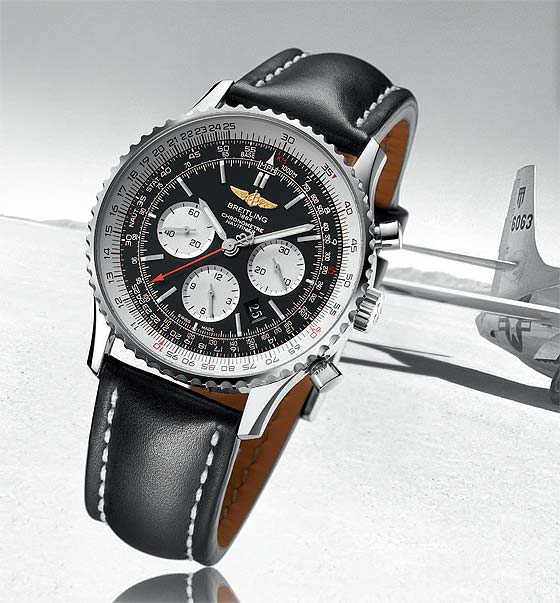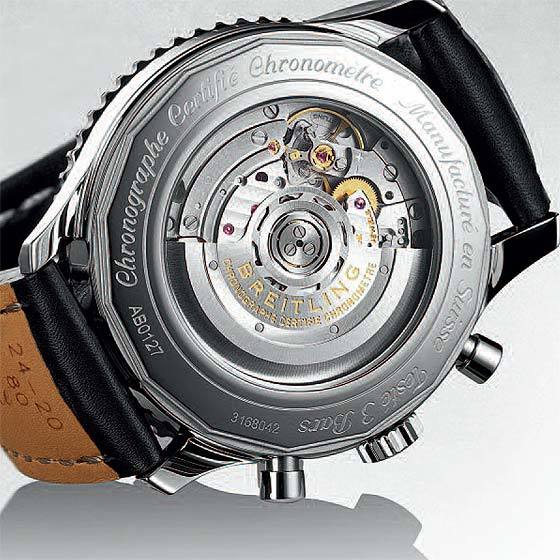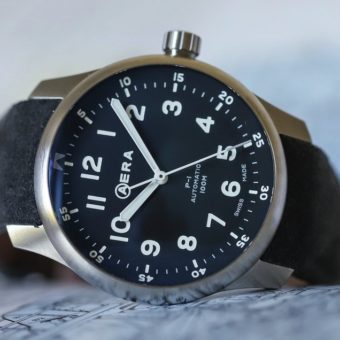Breitling has enlarged its pilots’ watch from 1952, the Breitling Navitimer, to a whopping 46 mm. Is the bigger Navitimer the better one? Find out in our in-depth test, the cover feature of the July-August 2015 issue of WatchTime.
When Breitling introduced the Navitimer In 1952, the first commercial jet planes were just coming into service. Experimental transonic and supersonic aircraft like the Douglas X-3 Stiletto and D-558-II Skyrocket were making aviation history. The Breitling Navitimer was designed to help pilots coordinate time and navigation. The watch was equipped with a built-in circular slide rule that let pilots calculate critical measurements such as fuel consumption, drift angle and ground speed with- out carrying a slide rule into the cockpit. The Navitimer made it easier to perform calculations in-flight and ensured that a slide rule was always close at hand. The Aircraft Owners and Pilots Association (AOPA) chose the Navitimer as its official watch. In the 1950s and ’60s, many Navitimers had the AOPA logo.

But there was one disadvantage: the numbers on the Navitimer’s scales were too small to be read easily. The original Navitimer’s 40-mm case was large by 1950s standards, but the numbers on its scales were still tiny. The Navitimer 01, which debuted in 2011, had a larger, 43-mm case. (It also contained Breitling’s first manufacture movement.) And the newest version of the Navitimer 01, our test watch, is even larger, at 46 mm. It was introduced in 2014.
The larger dial naturally offers better legibility: the slide rule has bigger numerals that are easier to read. And it’s easier to operate the slide rule on the larger watch. But the scales and contrasting subdials show so much data, the wearer may have trouble deciphering it all, even on the larger dial. Legibility would be better if Breitling eliminated the dial’s tachymeter scale, which isn’t absolutely necessary on a pilots’ watch.
We also found that there isn’t much contrast between the steel hour and minutes hands and the silver subdials beneath them, although luminous material on the hands offers some improvement. But there’s no luminous substance on the elapsed-time hands, so the counters for elapsed minutes and elapsed hours have even less contrast.
At night, the luminous material on the hour and minutes hands, together with small luminous dots at the ends of the indexes and a double luminous dot at the 12, provide some legibility, but there isn’t enough luminous substance on the dial for easy nighttime reading. The large Navitimer’s dial is available with indexes only, not numerals. A version of the smaller model is available with numerals; it has luminous material on the hour and minutes hands, but not on the dial.

Click here to download our full test of the Breitling Navitimer 01 (46 mm), including complete specs, scores and prices, for just $2.99 from the WatchTime online store.
This article was originally posted on July 5, 2015, and has been updated.







I woud see a replay